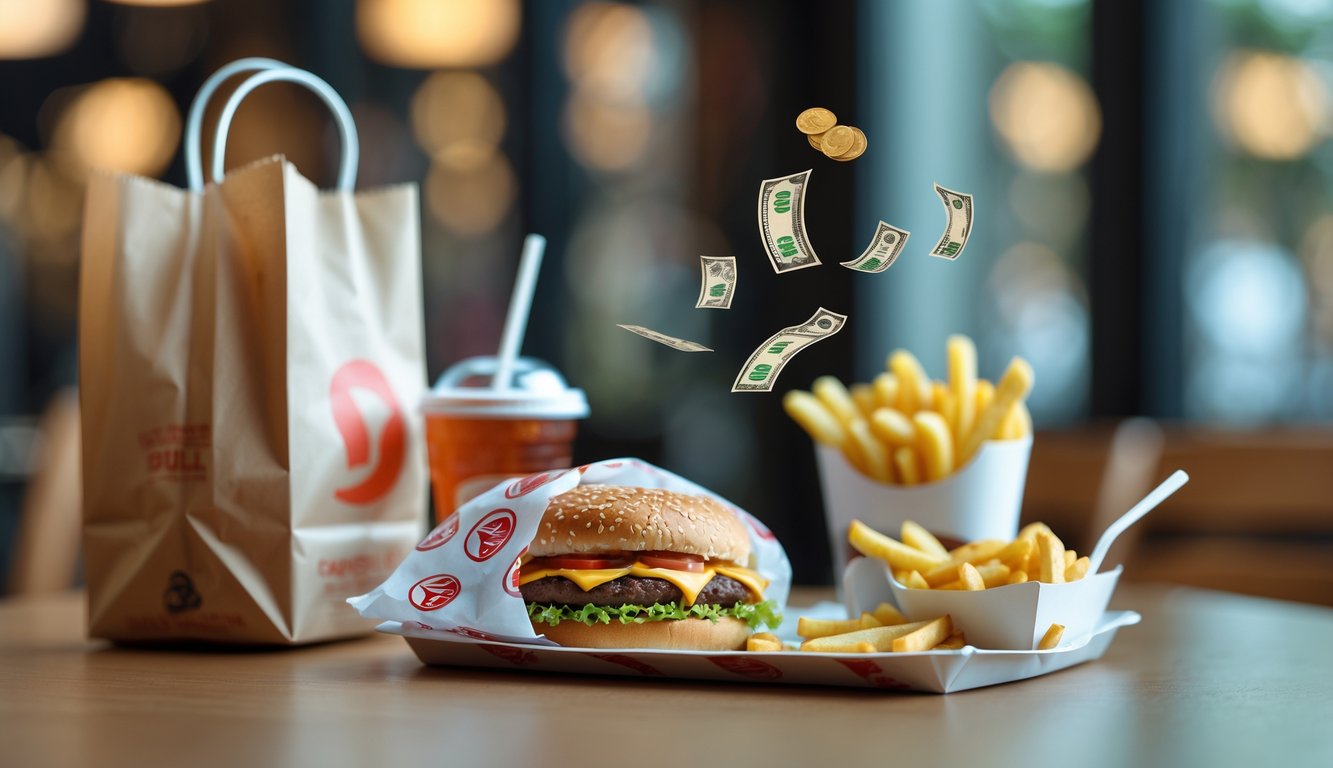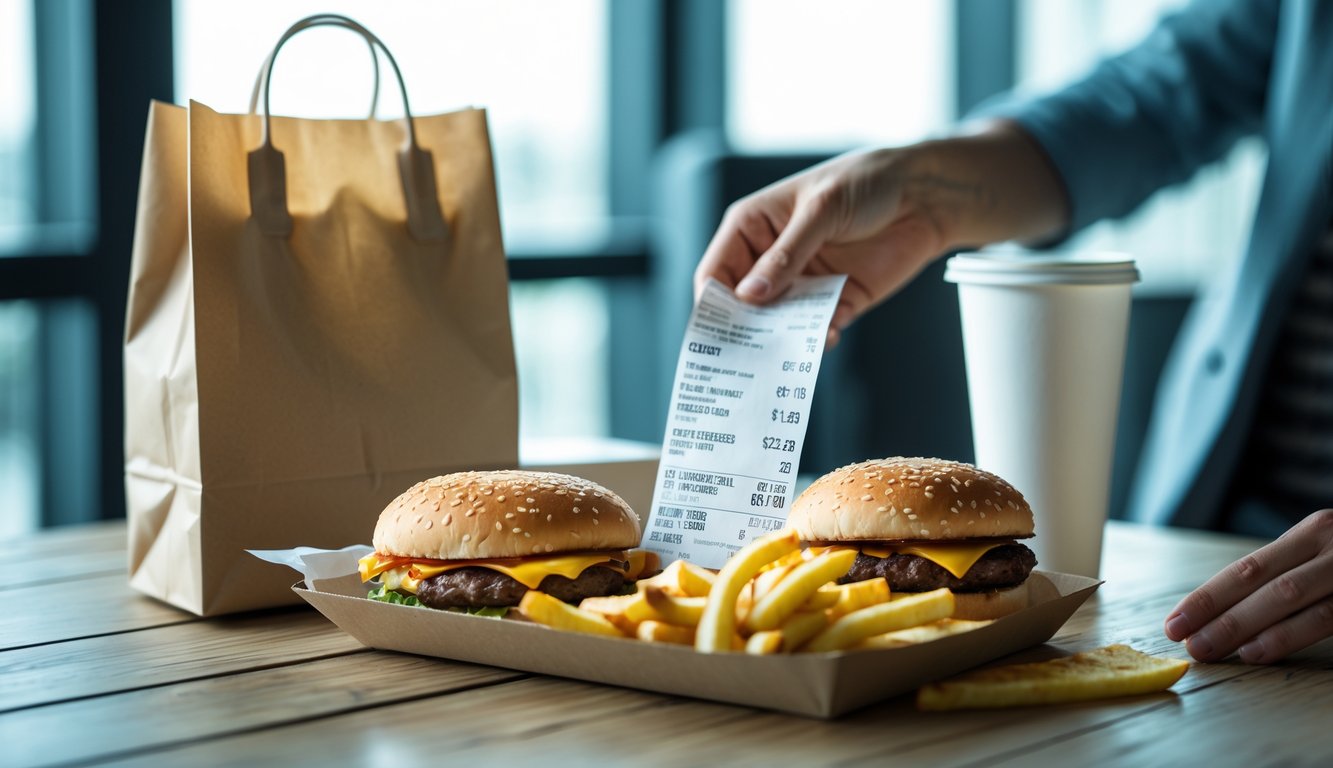
So, I’m scrolling through the Chick-fil-A app, half-awake, and—bam—30% higher prices than I remembered. Who’s actually doing mental math in a drive-thru? Not me. Ordering online or for takeout? You’ll pay more, and nobody really stops to check. It’s not just the sticker price, either. I get these extra “convenience” fees, right there next to my limp fries. Some fast food consultant once told me—deadpan—“Digital menus are for higher profits, not just customer experience.” I’m still annoyed about the $2.99 delivery fee for a ten-minute walk. Like, just… why?
If I actually cared about menu math, I’d just cook at home (not that my kitchen skills are better, but at least I know the markup). Now, even picking up my own food at Wendy’s or Panda Express hits me with digital price bumps, random packaging charges, and those annoying “small order” dings. Statista claims U.S. fast food prices shot up almost 30% in two years. For what? My fries are still cold. No one at the register ever mentions the fees, and my friend swears she got charged a “reusable bag fee” that just blended into the tax line.
What really gets me is those sneaky order screens—pre-selecting upgrades, like extra cheese for 49¢, or charging for sauces I didn’t ask for. I’m still figuring out if I want the regular or deluxe chicken sandwich, and suddenly my total’s up by two bucks. The big chains? They’re pros at micro-charges. Even insiders basically shrug when I ask. “Order flow optimization,” they say. I still don’t get why a combo meal costs less in person than on the app during a dead hour. Feels rigged.
Understanding Hidden Costs in Fast Food Takeout

Trying to grab a burger on a lazy Wednesday? Always costs more than the sign says. The fees are as slippery as a spilled drink in my car. Prices aren’t just prices—suddenly napkins and the privilege of skipping a line have these weird invisible costs. My bank statement looks like a puzzle with missing pieces.
What Are Hidden Charges?
Three bucks for delivery. Almost the same just for a “service fee.” I never signed up for the app to take a cut just because I ordered from my couch. Don’t even get me started on “regulatory recovery fees”—what does that even mean? Pretty sure the IRS isn’t taxing my chicken nuggets, but the fees show up anyway, $1.23 here, $2.60 there, always unexplained.
Industry research throws around big numbers—over $931 billion for fast food, per National Integrated Health. Wild. But for people like me, it’s the invisible nickels and dimes every week that add up. I used to think “hidden costs” meant health stuff, but nope—it’s just money trickling out of my wallet. Why did I get a “convenience fee” for picking up at the counter instead of the drive-thru? Nobody’s paying me for my time.
How Fast Food Chains Conceal Extra Fees
Fees vanish into receipt jargon—“bag fee,” “takeout surcharge,” “online order adjustment.” Good luck finding them without a magnifying glass. Experts say third-party delivery markups (DoorDash, Uber Eats) often top 15%, but even when I order direct, there’s a weird upcharge on the digital menu. Like, is this a choose-your-own-expense game or lunch?
I’ve seen paper straws as a line item. Some chains just admit “supply chain stabilization” surcharges. That’s not code for more fries. It’s just the cost of fast food existing, I guess. I talked to a manager once; he said most people don’t notice. They’re focused on the combo upsize, not the penny-shaving. Somewhere, a suit is celebrating another “menu optimization” win, all because I tapped “order” one extra time and my chicken sandwich became a $12 event.
Menu Prices and Service Fees
Can’t get out of the drive-thru without a receipt that looks like a failed math test. Prices don’t even try to hide anymore. Weird little bumps on menu boards, sneaky “convenience” add-ons—especially on your phone. Anyone who likes things quick and cheap? Forget it. Nobody warned me about the silent inflation of combo meals, or the random $2 “processing fee” just to get a burger to-go.
Inflated Takeout Menu Prices
Last weekend, I used the app—wanted to feel better about a Bacon King combo as takeout. The price? $11.29 online, $9.99 on the in-store board. I checked the zip code. Not a mistake. Restaurant Business (May 2025) says menu prices went up 4.1% in a year. Chipotle’s CFO flat-out said they just pass higher labor and input costs to us.
If I sit inside, it’s cheaper. Use mobile ordering or pickup? Suddenly there’s a “takeout premium.” That’s not my phrase—an exec told me it’s standard now. It’s not an extra fee, just baked into the sandwich price. We all blame inflation or wages, but look closer: food costs are half the story. The rest? “Convenience” surcharge. Fast food isn’t even pretending anymore.
Unexpected Service Charges
What really bugs me: these new, polite-sounding service fees that show up after I hit pay. “Order Fulfillment Fee” ($1.59), “Sustainability Charge” ($0.28), or a “Takeout Surcharge” for curbside. Jessica Long wrote in Menu Math (May 2025) that restaurants are testing new fees instead of just raising menu prices, hoping we don’t notice. Last month, my $15 order turned into $18.71 after “papercut” fees. Nobody I know can explain what half of them even cover.
Tips used to be optional at the counter. Now, apps make it so awkward to skip, I just give in. And half these fees? Nothing to do with food or worker pay. It’s just restaurants padding their “average ticket” and dodging the “we raised prices” headline. No one explains, no one apologizes, and by the time I see the total, it’s too late.
Third-Party Delivery Fee Markups
My last delivery? Looked like a calculus worksheet gone wrong. $12 meal, $22 total before tip. Uber Eats, DoorDash, Grubhub—they all add “service fee,” “delivery fee,” and some “mystery surcharge.” The restaurant might see 70% of the menu price. Maybe. Third-party apps quietly add a markup to each item. Try it: order a Whopper in the Burger King app ($6.19) versus DoorDash ($7.79), same day, same zip.
Why does Panda Express pickup cost $2 less than DoorDash? Hidden markups aren’t regulated. Unless you compare both screens, you never notice what the middleman’s taking. Restaurateurs I’ve talked to call it a “necessary evil.” For us? We barely know. Inflation’s just an excuse. If you eat at home, you’re paying extra for the algorithm’s “convenience.” Never felt more nickel-and-dimed by the promise of “free delivery” that’s not even close to free.



